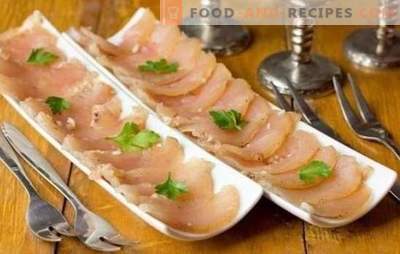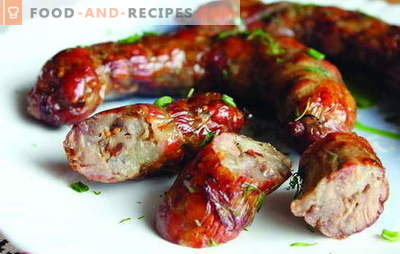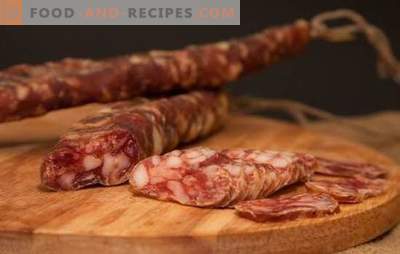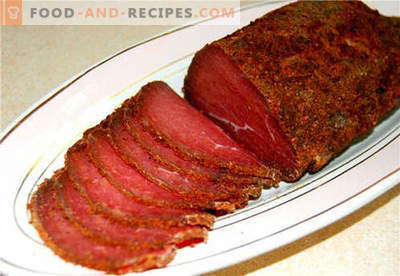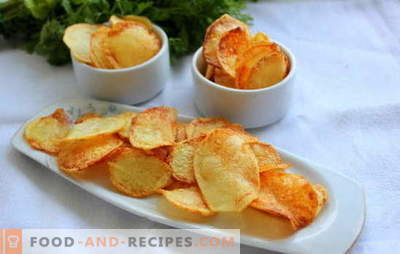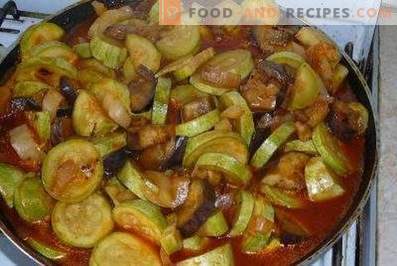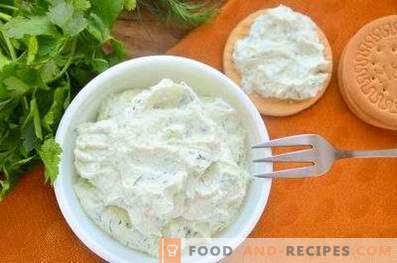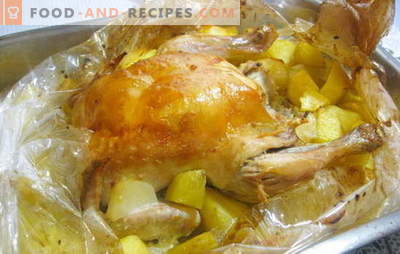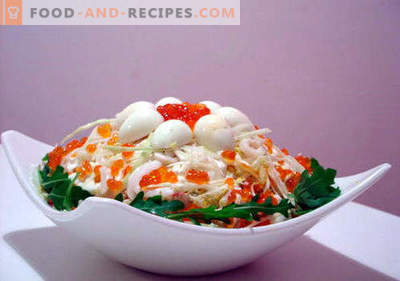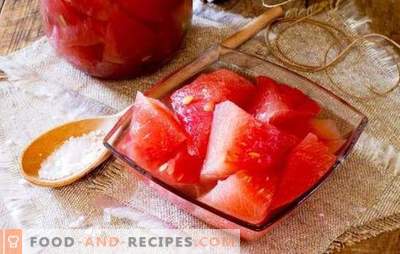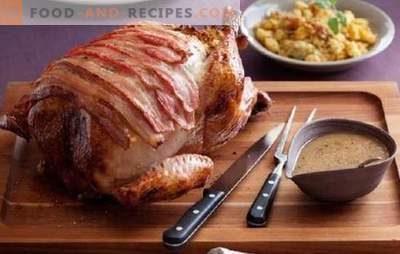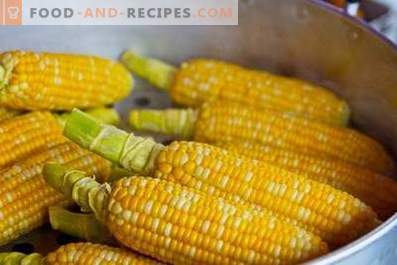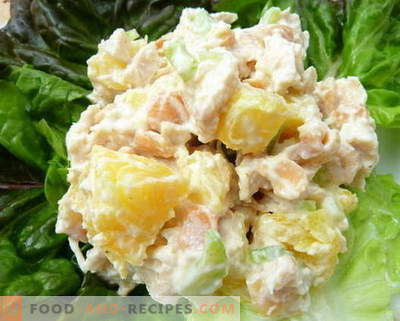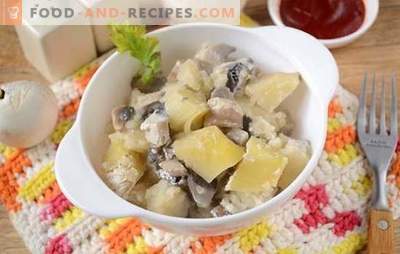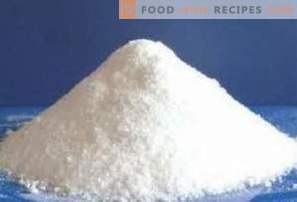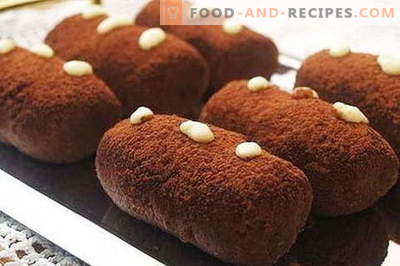
The history of the origin of basturma, according to some scientific sources, is slightly more than two thousand years old, and is associated with Turkic nomadic tribes. But it is also known that the Mongoloid race of people existed in North and South America: the indigenous population of these continents was not associated with Ancient China or the Kingdom of the Great Moguls. It is unlikely that the Incas or the Mayans exchanged recipes for the preparation of dried meat for military campaigns with the ancient peoples who inhabited the Caucasus, Altai, the Middle East and even Australia.
If it were not for the Spanish Hamon, one could agree with the version that the invention of basturma belongs to the Turkic peoples, who gradually settled on all continents. But the Spaniards, rather, belong to the European race, and America was discovered by Columbus, largely due to stocks of dried meat and special bread in barrels, which the brave sailors loaded onto ships before a distant wandering into the unknown.
Therefore, we can assume that each nation had its own basturma, and it appeared, most likely, at the same time as the earliest civilizations, when man needed to preserve the meat harvested during the hunt for huge animals.
This is a proverb, as they say, and the story of the most elegant and desirable dish on festive tables in our day is ahead.
Basturma from pork and other types of meat - the main features of the technology
Most of the Turkic peoples profess Islam, which prohibits the use of pork, the Great Mughals preferred horse meat, and some nations did not have to eat beef to save the livestock of animals that give valuable milk. Therefore, we will talk about the drying of meat in general. Everyone will choose for himself his appearance, according to his faith, although pork, according to statistics, ranks second in terms of consumption in the world, due to its ease in cooking, taste and nutritional properties.
Discover the secrets of cooking delicacy of all time Taste, technology of preparation and duration of ripening of raw meat depend on the type of meat, its composition, density, structure of muscle fibers. Pork has the most delicate and juicy texture due to the large amount of fat in comparison with beef and horse meat, so it matures faster when salted and dried. It follows that the technology of making basturma from beef and horse meat involves only a longer process of aging in saline or a dry salt mixture.
Choice of raw materials for basturma
It should be noted that basturma does not contain cholesterol even from the fattest parts of pork. Salt completely destroys fat cells, which are its main source, but at the same time there is a higher humidity in pork compared to beef and other meats. Another advantage of pork is that practically any muscle parts of pork carcass are suitable for curing and smoking, while only tenderloin, pork chops, and rump are those parts of the animal that were subjected to the least physical exercise.
Pay attention to the freshness of meat, the degree of its maturation. After slaughter, the meat should be stored at 0 + 4 ° C for at least three days for the fermentation process to begin. At this time, useful acids are formed in the protein tissue, which improves the quality and benefits of the product. Color, elasticity should correspond to the external characteristics of each type of meat. Chilled meat is suitable for drying. Frozen pork or beef loses their inherent smell and taste, and these factors are almost crucial for the preparation of basturma.
Preparing inventory
Cookware, as well as kitchen tools and accessories must also meet the highest sanitary requirements, which will increase the shelf life of the finished product. Treat the containers with antiseptic agents, scald them with boiling water and dry them before starting work.
Plastic and polymer containers for salting and storage exclude, even if they are written that they do not contain non-food components. The smell of plastic is still transmitted to meat and spoils the flavor of pork basturma. Prefer ceramic, enamelware (without cracks and damage to the enamel), the capacity of their stainless steel. Methods of salting meat
For the dry-cleaning of meat products at home, dry and brine process is more often used. It is also suitable for the preparation of pork mixed method and the introduction of curing solution injections. If a whole pork ham is taken for pickling, then the method using injections is more convenient for salting acceleration. Each of them has its advantages and disadvantages. Therefore, the choice of salting method will have to be done independently, having familiarized with the technology of each method.
Dry mode:
The essence of dry salted meat is in dehydration: salt draws moisture from the intercellular tissues, thereby preventing the growth of bacteria that require a moist environment.
Warning! Salt is a preservative, but it does not kill pathogens.
Salt is mixed with spices. The meat is rubbed with curing mixture and tightly placed under the yoke in the prepared container, trying not to leave free space between the pieces. In the process of pickling, the excreted meat juice is taken to prevent the reproduction of pathogenic microorganisms in a wet environment. In the process of salting the meat is turned over for uniform salting, the strongly soaked salt mixture is changed.
For dry salting, no more than 10 g of spicy mixtures per 1 kg of meat are used: cumin, juniper, coriander, pepper, garlic, anise, cardamom, bay leaf or other seasonings of choice. Professionals recommend adding 2% sugar to the curing mixture, also depending on the volume of raw materials. Sugar enhances the effects of salt, softens the taste of meat, giving it a more pleasant shade.
1 kg of pork is salted for 15-20 days. After that, the corned beef is washed and soaked for 24 hours in warm purified water. Water at the same time often change.
The next stage is air drying. For this, the meat is suspended in a cool and well ventilated room. It is necessary to exclude the presence in the vicinity of products with a strong specific smell, chemical household products.
In the conditions of a city apartment, such conditions can be provided in the refrigerator, and in a cool season - on the balcony, with no more than 75% humidity. Outdoors, meat is placed under the net to protect the product from insects. If there is an opportunity, then after porking the pork basturma is best smoked. Smoking improves the taste of the product, increases its shelf life. In a city apartment, try salting the meat in small portions, weighing no more than 2 kg. Large pieces of pork will be difficult to ensure proper care during the drying and curing process.
In the curing mixture to preserve the natural color of the meat add nitrite salt - 5 mg / 1 kg of meat. Despite the “notoriety” of these salts, such a minimum dose will not be harmful to health. For comparison: in the salad from raw cabbage the content of this salt, without the introduction of appropriate fertilizers when growing vegetables, can reach 4 mg / 100 g of product.
Mineral salts are easily excreted from the body with water, with sufficient and daily use of it. Poisoning with dry-cured meat product, prepared without the addition of sodium nitrite, is fraught with more serious and serious complications. Food supplement E-250 is approved for use in the food industry, including for the production of meat products. Nitrite salt is mixed with edible salt.
Brine method:
For the wet method of salting, the same ingredients are used, but they are dissolved in water, and the seasonings are brewed or infused. Cooked brine completely cover the meat and also kept in a cool place in a clean and tightly closed container. Before laying the meat solution is recommended to boil and cool. For brine, use only purified water.
The advantage of the brine method is a more uniform distribution of salt in the meat. Wet salting allows you to salt the meat much faster, as the saline solution more easily penetrates the muscle tissue. The brine method allows you to adjust the salt concentration to get a lightly salted, moderately salty and salty product. The minimum salt concentration per liter of liquid is 12%, the maximum amount is 28%.
The disadvantage of this method is a significant loss of protein, as it, dissolving, goes into the brine. The meat in the process of salting swells considerably, but also dries for a long time. The storage time of the product prepared by the brine method is significantly reduced.
As for the list of spice mixes used to make pork basturma, this list is completely dependent on personal preferences, features of one or another ethnic cuisine with its national traditions. Try to cook dried meat in different ways.
* In the proposed recipes, the calculation of spices and seasonings is given for 1 kg of meat.
1. Armenian pork basturma
For the original basturma recipe in Armenian, use beef. But, as it turned out, Armenian spices and red wine for pork basturma is also a very good option for cooking meat delicacy.
Products:
Cutting
Dry red wine 1.15 L
Chile ground
Sumac
Salt 270 g
Garlic
Chaman (fenugreek hay)
Nut grass
Flour 200-250 g
Cooking:
Prepare the marinade first. In 1 liter of wine, put 180 g of salt and spices. In the original recipe, adding sugar and sodium nitrite is not provided, so act on your own. Consider that sugar is present in wine. If you plan to cook meat weighing more than two kilograms, then add sodium nitrite to salt, as stated above, in the basic technological principles. Spices should be no more than 10% by weight of the meat product, and choose the ratio according to your taste.
Put the meat into a container of suitable capacity, cover with boiled and cooled marinade, set oppression. Soak in the refrigerator for seven days. The container must be tightly closed. Then take out meat, dry. You can hang or wipe with a napkin.
Prepare dough from flour or chaman by combining powder of chaman or flour with a small amount of spices, remaining salt and 150 ml of wine. Meat cover cooked mixture, a layer of 2-3 mm. Hang the meat in a cool dry place; You can put on the top shelf of the refrigerator, but do not forget to turn it over regularly. After 10 days, the pork basturma will be ready.
If you do not get sumac - replace it with dried pomegranate peel (to taste - very similar!).
For housewives who are not familiar with Caucasian cuisine, a small reference: the chaman or fenugreek is part of many Caucasian and Asian seasonings, has a peculiar smell and taste, resembling a hazelnut. For basturma in Armenian, this yellowish powder is used in large quantities in the original recipe: it is added to the marinade, and then a thick spicy mixture resembling a liquid dough is prepared on its basis for coating the meat before drying. If there is no seasoning in sufficient quantity, or you don’t like its peculiar taste and smell, replace it with flour to get the desired consistency.
2. Italian style pork basturma
It is difficult to reproduce exactly the recipe and technology of cooking Parma ham. This is a very time consuming and lengthy process, besides, it requires the use of special raw meat - ham from a pig that, during its lifetime, ate only milk, fruit (most likely available only in Parma), breathing the air of the Mediterranean coast.
Of these conditions, on the Central Russian Plain, you can only get suckling pig and spices from the supermarket. But for this ham, the weight of a pig should be 160 kg, age - 10 months, and the temptation to try pork basturma in Italian is so great that you should think about how to cook it to feel, at least approximately, famous throughout the world, taste.
If you are willing to patiently wait for the ripening of meat for 10-12 months, get down to business.
Raw materials:
Ham (with skin) - not less than 10 kg
Spices: pepper, cloves, nutmeg, coriander and mustard - only 10%
A mixture of sea (13%) and nitrite salt (4%) per 1 kg of meat
Sugar, cane 2%
Apple cider vinegar (6%), or dry wine - 200 ml / 1 l of water
Cooking:
The whole process of ham preparation should take place at 0 + 4 ° C, from soaking to salting and drying. Therefore, first prepare such a place. Ideal basement, but for the ham you need to prepare a special frame with a protective grid. The humidity of the drying room is 70-75%. In the frame or box where the ham will be cooked, place salt on the bottom. It will need to be periodically changed, as moisture. A good option is a drying cabinet.
Choose a ham with soft pink flesh and small layers of fat. Keep in mind that in finished form, the weight of the pork leg should be reduced by 40%. Soak your feet in water with fruit vinegar or homemade dry wine. Water should completely cover the meat. Pre soaking of meat in the original recipe is not provided, but this technique will allow to bring the taste of pork to the one that is grown in a fertile climate. After soaking the meat must be dried. Suspend the ham by installing a drip tray. Scrape the pigskin skin carefully with a knife, but try not to damage it. The dry curing mixture of sugar, salt and spices divided into 3 parts. Thoroughly rub the meat with half of the cooked mixture, especially in the cut. Place the ham in a vacuum bag and refrigerate for 2 weeks. After 14-15 days, repeat the rubbing procedure, after removing the released juice, rubbing the meat with a napkin. Use the other half of the mixture. Seal the bag again for the same period.
A month later, print the ham, and soak in clean cold water for 5-6 hours. Suspend and dry in a cool place again. Rub the remaining part of the curing mixture and dry in a prepared place, maintaining the necessary temperature and humidity conditions. Do not forget to follow the sanitary conditions.
3. Pork Basturma - Simple Recipe
The technology of pork basturma cooking is almost no different from home-made dry sausage. Having picked up the suitable recipe of instant cooking of dried meat, it is possible to regale with meat delicacy constantly.
Select a shelf in the refrigerator for holding and storing basturma, making other delicacies. Prepare a hermetically sealed container with a grid stand for draining the liquid.
Raw materials:
Pork neck 2 kg
A mixture of ground spices (10%):
Carnation
Pepper (fragrant, black, chili)
Bay leaf
Muscat
Sugar 2%
Salt 14%
Sodium Nitrite 0.8 g
Cooking:
Washed meat, wipe with a napkin. Put in a clean dish, sprinkle with the curing mixture, put down the oppression and, tightly covered with a lid, put it in the refrigerator. After 48 hours, remove the oppression. Put the meat on a sterile gauze napkin. Treat the surface once more with curing mixture. Wrap in cheesecloth and place in a container on the net. Add salt to the bottom of the container to absorb excess moisture. Close lid tightly. Store in the refrigerator for 15-20 days. Periodically check the basturma, turn over, change the gauze bandage and salt at the bottom.
4. Pork basturma - brine method
Ingredients:
Cutting 1.5 kg
For brine:
Bay leaf Pepper
Muscat
Carnation
Coriander
Garlic
Salt 180 g
Sugar 60 g
Water 2.5-3.0 l
Cooking Technology:
Put all spices in water, bring to a boil. Refrigerate and strain the pickle. Put the meat in the prepared pan, cover with brine. Leave for 3-4 days in the fridge. Then take it out and put it on a gauze napkin soaked in mustard. Wrap and put under the yoke for a day, at room temperature. Then remove the gauze bandage, hang the meat in the refrigerator for two weeks.
5. Pork basturma in cognac marinade
We open a secret: strong alcoholic drinks very quickly impregnate the meat, make it tender and fragrant, if, of course, good cognac is chosen for the marinade. But perhaps a good herbal or fruit tincture is suitable for this purpose.
Check out this recipe for sure!
Products:
Lean pork 2.5 kg
Sea salt 700 g
Pepper (red and black, ground) 150 g
Sage 100 g
Cognac (or homemade brandy tincture) 0.5 l
Sugar to taste
Cooking:
Wash pork pulp, remove grease and film. In the container, put the curing mixture, pour brandy. Rub the meat well with the mixture. Place it in the same container, and try to wrap the meat with salt. Do not be afraid to get too salty product: sea salt will draw moisture as much as necessary, and will not absorb excess sea salt. Close the container and clean in the cold for a day. Then remove the meat, rinse with running water. Dry with a napkin, hang in the refrigerator for another day. Everything, you can treat your friends!
6. Pork basturma - smoked meat products
Composition:
6 kg tenderloin
Curing mix (according to the recipe No. 5)
Walnut oil with the addition of mustard seeds, spicy spices (for plastering)
Cooking:
If you can, be sure to try to cook smoked jerked meat. Ideally, you need a household smokehouse, but in the country you can build a device from scrap materials. The main condition: it is necessary to ensure the flow of smoke from fruit sawdust for 12 hours into a barrel or box, where already salted and slightly dried meat semi-finished products are suspended. The temperature of the smoke in the container with meat is 28-30 ° C. After smoking, cool the meat, cover with oil to form a beautiful shiny crust. Store in a dry and cool place, wrapped in paper.
Pork Basturma - Tips & Tricks
The most convenient time of the year for making basturma and other raw smoked products is late autumn, winter and early spring. If the refrigerator is small, during this period it is possible to adapt a balcony for drying meat.
Harvesting dried-up delicacies for the future will significantly save the family budget in preparation for the holidays.


